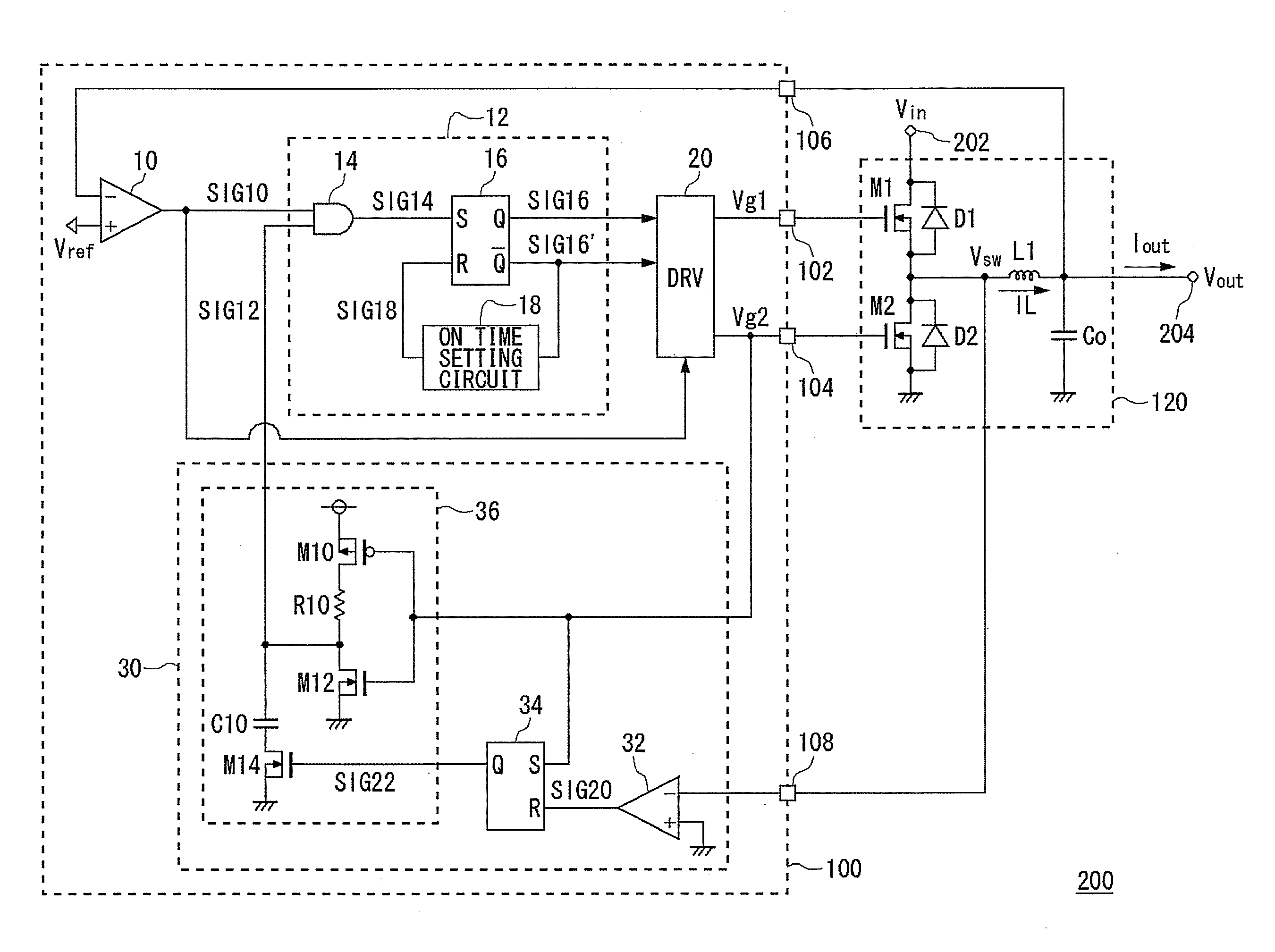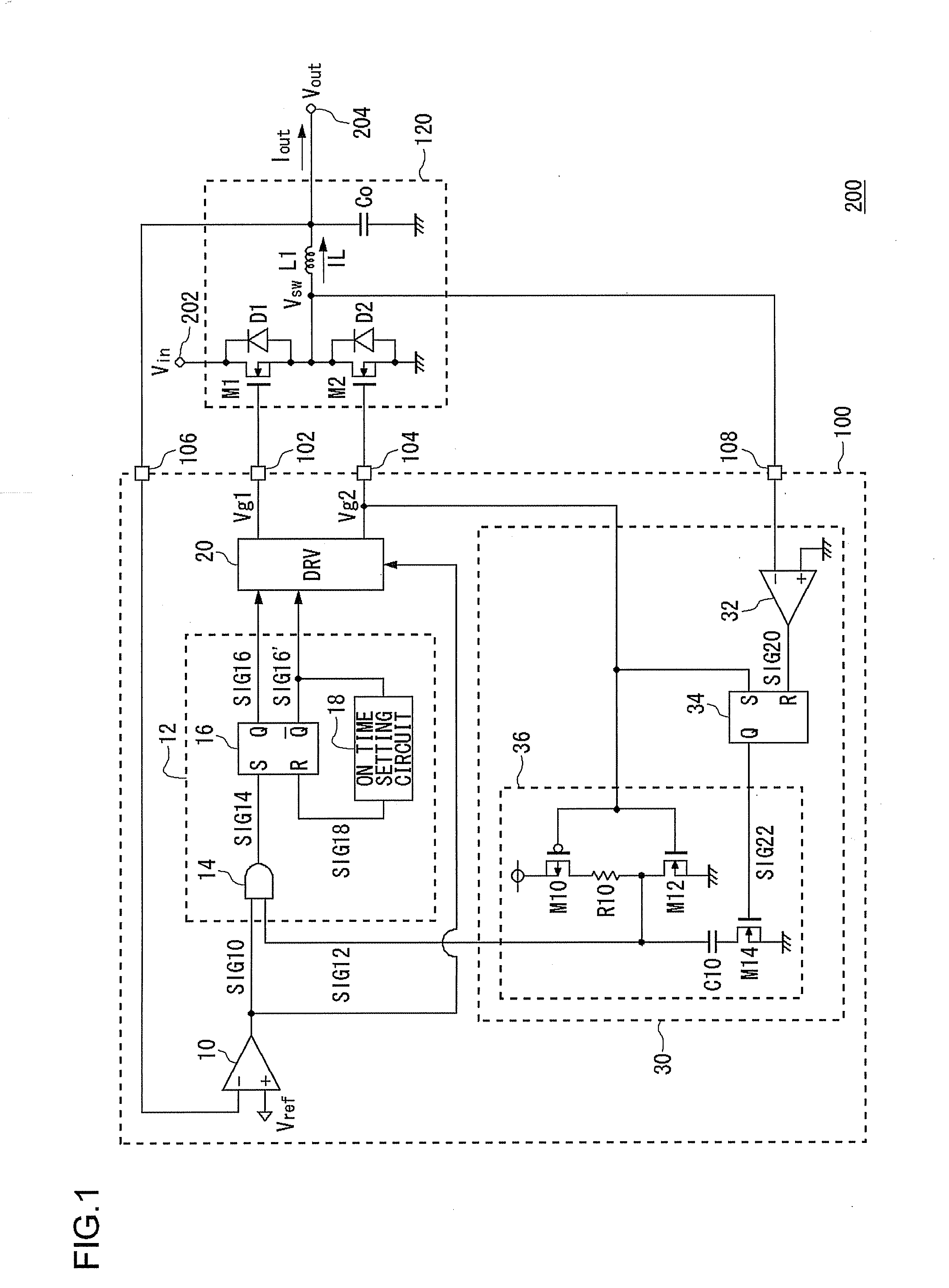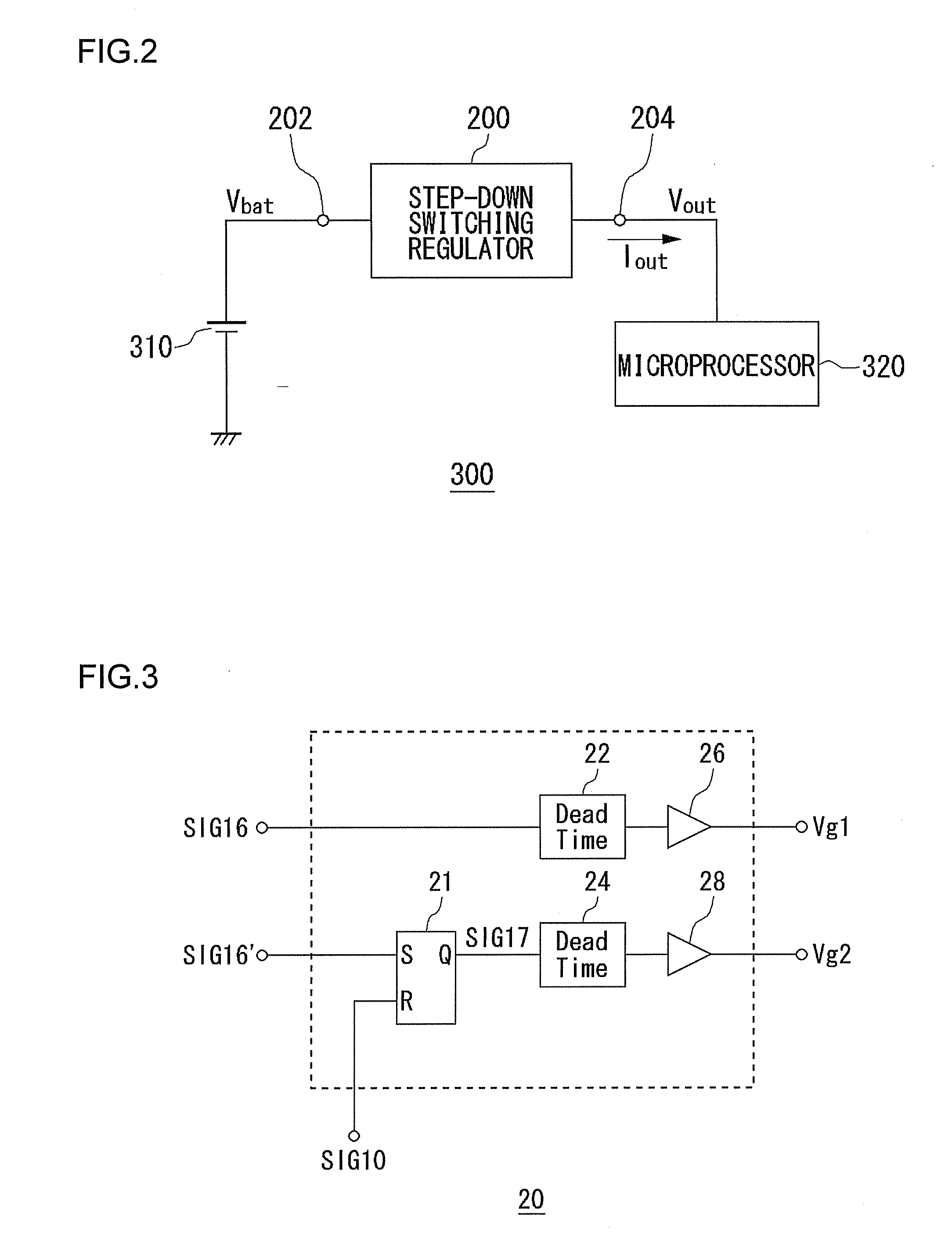Step-down switching regulator, control circuit thereof, and electronic device using the same
a technology of step-down switching and control circuit, applied in the direction of electric variable regulation, process and machine control, instruments, etc., can solve the problems of increased circuit area, waste of power consumption, and difficult operation of the circuit, so as to improve efficiency and increase the effect of the circuit area
- Summary
- Abstract
- Description
- Claims
- Application Information
AI Technical Summary
Benefits of technology
Problems solved by technology
Method used
Image
Examples
first embodiment
[0043]FIG. 1 is a circuit diagram showing a configuration of a step-down switching regulator 200 according to a first embodiment. FIG. 2 is a block diagram showing a configuration of an electronic device 300 in which the step-down switching regulator 200 of FIG. 1 is installed. The electronic device 300 is, for example, a laptop personal computer, and is provided with a battery 310, a microprocessor 320 and the step-down switching regulator 200.
[0044]The battery 310 is configured from, for example, a plurality of lithium-ion battery cells, and outputs a battery voltage Vbat of about 12 V. The microprocessor 320 performs various arithmetic processing, is a block that performs overall control of the entire electronic device 300, and is an LSI that operates with a power supply voltage of about 1.5 V.
[0045]The step-down switching regulator 200 according to the present embodiment steps down the battery voltage Vbat of about 12 V, to supply the power supply voltage of the microprocessor 3...
second embodiment
[0092]FIG. 8 is a circuit diagram showing a configuration of a step-down switching regulator 200a according to a second embodiment. In the same figure, component elements that are the same or equivalent to FIG. 1 are given the same reference symbols, and explanations are omitted as appropriate. Below, explanations center on differences from the step-down switching regulator 200 of FIG. 1 explained in the first embodiment.
[0093]A control circuit 100a of FIG. 8 differs from the control circuit 100 of FIG. 1 in configuration of the light load mode detector 30 and the driver circuit 20.
[0094]A light load mode detector 30a of FIG. 8, in addition to the light load mode detector 30 of FIG. 1, is further provided with a third dead time generation circuit 40, an inverter 44, and an AND gate 46.
[0095]The third dead time generation circuit 40 outputs a signal SIG30, in which a negative edge of the second control signal Vg2 is delayed. The inverter 44 inverts an output signal SIG30 of the third...
PUM
 Login to View More
Login to View More Abstract
Description
Claims
Application Information
 Login to View More
Login to View More - R&D
- Intellectual Property
- Life Sciences
- Materials
- Tech Scout
- Unparalleled Data Quality
- Higher Quality Content
- 60% Fewer Hallucinations
Browse by: Latest US Patents, China's latest patents, Technical Efficacy Thesaurus, Application Domain, Technology Topic, Popular Technical Reports.
© 2025 PatSnap. All rights reserved.Legal|Privacy policy|Modern Slavery Act Transparency Statement|Sitemap|About US| Contact US: help@patsnap.com



